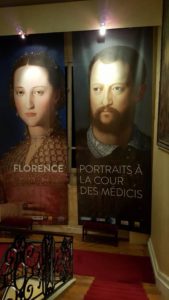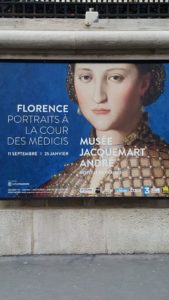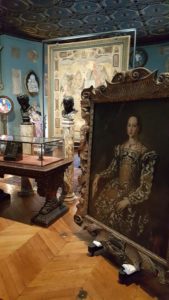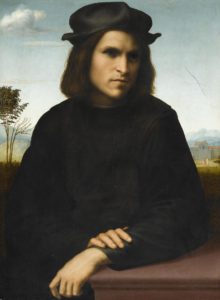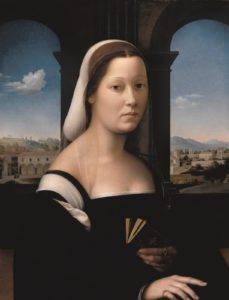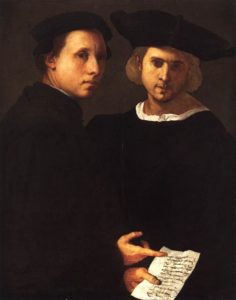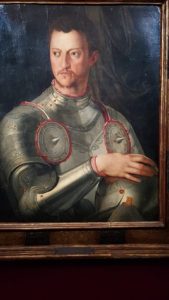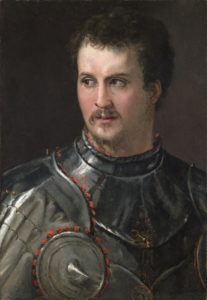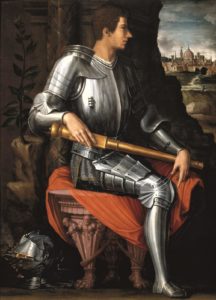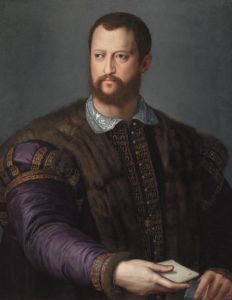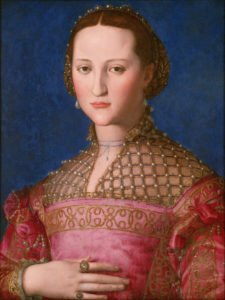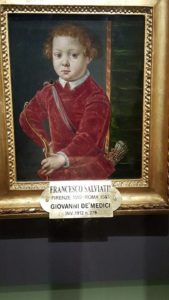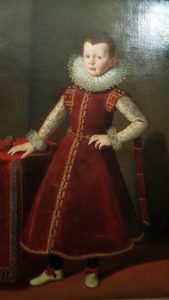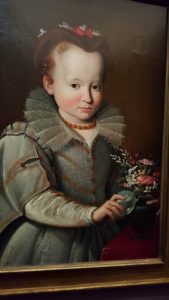- On 2016-01-17
- In blog
- Tags
Portraits at the court of the Medicis in the museum Jacquemart André
The little art seeker has seen for you a gorgeous exhibition in Paris in this chilly month of January 2016:portraits at the court of the Medicis.
The beautiful hotel particulier Jacquemart André with its beautiful collections of the 18th century opens its gates to this amazing exhibition.
The exhibition starts with the portrait of one of the most important figure in Florentine history at the turn of the sixteenth century:Savanarola.
This man was a dominican friar and preacher who condemned the extravagance and the corruption of the Medici Family.
He was hostile to Lorenzo the Magnificent and was famous for his terrible speeches against sin and greediness that terrified the Florentine nobility.
The portrait shows how popular the man was among the Florentine citizens.
The man will be accused of heresy and excommunicated by Pope Alexander VI then burn at the stake in the central square of Florence.
The painter ,Fra Bartolomeo ,once revealed his attachment for the man he described as a prophet !As a matter of fact,a monk himself he had common ideas with his terrible model!
He has chosen to represent him in profile as on the antique medals and cameos.
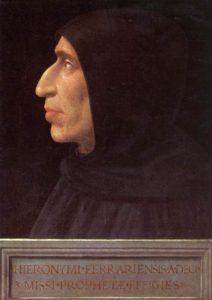 Portrait of Savonarola, Fra Bartolomeo, 1499-1500
Portrait of Savonarola, Fra Bartolomeo, 1499-1500
So we are in Florence around 1510.The Medici run the city and the love they have for portraits will be also adopted by the people of this city full of vitality and energy.
Portrait of a man, Franciabigio,~1510 Portrait of a woman(la monaca),1510-1515,Ridofo del Ghirlandaio
The little art seeker loved the beautiful portrait of the Florentine woman dubbed”la monaca”the nun.
It is attributed to Ghirlandaio who was a friend of Raphael.In the 16th century many Florentine portraits very often represent a landscape in the background,as did Leonardo da Vinci in many of his famous works ,a convention in painting he uses that will be reused by his contemporaries.
Like the Mona Lisa,the young woman is sitting on a loggia and is holding a prayer book in her hand.The landscape gives us a glimpse of the river Arno in the foreground but also of several monuments of Florence.
The painter managed to surrender with virtuosity the beauty of the lady’s features!!!
Now let us make a focus upon a portrait of two friends by Pontorno(1522-1523).
Portrait of two friends (Pontorno or Jacopo Carucci) ,1522-1523
The two young men represented here seem so modern in their way they’re looking at us.
The tradition of the double portrait was invented in Venice .These two men have a message to deliver and the painter intends to do so.
If you have a close look to the painting you will notice that they are showing us a document.This document contains an extract from the treatise in friendship from Cicero written in 44BCE.
These two men must be artists ,writers or Florentine patricians united by their sense of friendship.
Friendship was a favourite subject of humanism,a vast literary and philosophical movement which developed in Florence in fifteen century.
The exhibition gives then a great part to beautiful portraits of prestigious members of this famous family who had to fight during many years to keep their power .
The most beautiful portraits according us are the ones realized by Bronzino and representing Eleonora di Toledo and her husband Cosimo de’Medici ,aged 40.
Portrait of Eleonora di Toledo and Cosimo de ‘Medici ,Bronzino, aged 40.
She was from Spanish origins and helped to introduce refinement of the Spanish court to Florence in the mid fifteen century.
Daughter of the viceroy of Naples she married Cosimo in order to cement the alliance between the two sovereigns.
The painter Bronzino will be commissioned several times to realize her portrait alone or with her children.The artist who was very much inspired by the sculptures of Michelangelo has chosen to represent her in a rich dress of red satin decorated with pearls .
The expresionless face of the noble lady creates a distance between her and her viewver.She’s holding her right hand on her chest in a sign of faithfulness to her husband.
Cosimo displayed next to her ,is represented at age forty ,as a sure and strong character who is not afraid to be painted in civilian dress.
His impressive bulk is there to make us understand his important status.
The two characters were both patrons of the art and played a great part in the development of the city of Florence:building the Pitti palace.
The exhibition will then display portraits of royal and noble children …
From the second half of the 16th century,portraits of children who had been painted alongside to their parents became a genre in its own right.
The world of childhood was represented in a reassuring way thanks to the presence of pets,toys or a gentle governess.
Some portraits representing simple artists or learned people have also attracted our attention.
The musicians were very much sought-after by the Florentine princes.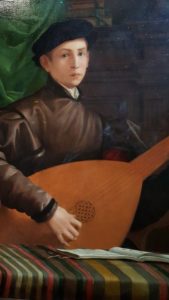 Portrait of a lute player, Francesco Salviati and Pontorno, 1529-1530
Portrait of a lute player, Francesco Salviati and Pontorno, 1529-1530
The lute was very popular during the Renaissance and was played both by professional musicians and the cultural elite.This portrait of a lute player reflect the importance of music in the 16th century.
The beautiful exhibition ends with a very huge portrait of one of our most famous french queen:Marie de Medici.
She was from italian origins and when her father Francesco 1 de Medici was poisened she was placed under the authority of her uncle ,Grand duke Ferdinando before being married to the king of France ,Henry IV.
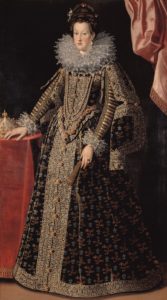 Portrait of Maria de’Medici, Santi di Tito and workshop, 1600
Portrait of Maria de’Medici, Santi di Tito and workshop, 1600
This work by Santi di Tito and his studio was executed between the signing of the marriage contract in 1600 and the celebration of the nuptials at a later date in Florence.The french king was not present.It was a proxy wedding.
Marie de Medici is portrayed in a lavish setting next to the crown of the kings of France decorated with fleur de lys.
Her costly dress emphasizes her wealth as her uncle gave her a dowry of 60000 ducats!!!
All these portraits makes us travel in the Renaissance time at a time when princes were collectors and learned men inspired by the beautiful ideal of humanism!


